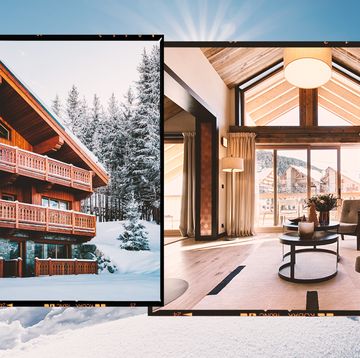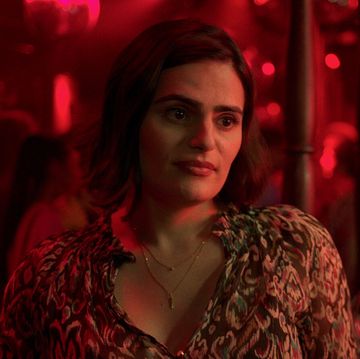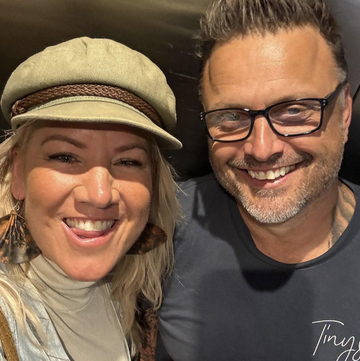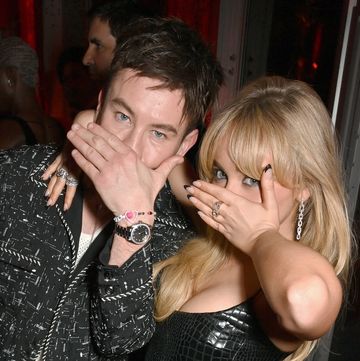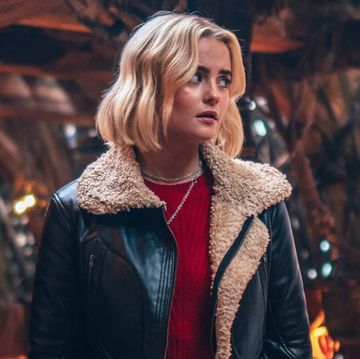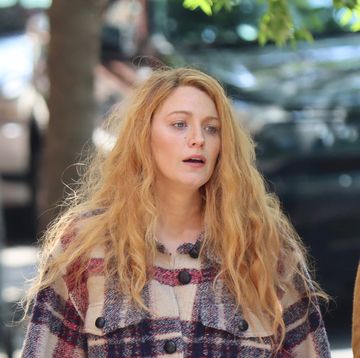When Margaret Atwood published her dystopian novel The Handmaid's Tale in 1985, it became an instant classic — thirty-two years later and its popularity is growing still. The novel, centering around a young woman chronicling her experience in a totalitarian theocracy that has overthrown the United States government, has received rave (if often slightly disconcerted) reviews and numerous awards, including the Governor General's Award for English language fiction and the Arthur C. Clarke Award. Conversely, the book's presence in U.S. and Canadian schools' literary canons has long been debated. From its explicit sexual and violent material, to its alleged negative depiction of religion, Atwood's classic has often received pushback from parents and school administrations alike.
Having already been adapted as a movie (starring Faye Dunaway, among others), a radio show, a graphic novel and even a ballet, Hulu announced in 2016 that it would re-envisioning the novel as a US TV series.
"The Handmaid’s Tale is a project that we have been committed to bringing to life as its story remains as powerful today as it did when Margaret first published her novel,” said MGM's Mark Burnett president of MGM’s Television and Digital Group, and Steve Stark, president of MGM's television development and production.
The series will now premiere in the UK on Channel 4 on Sunday 28th May. There will be ten episodes total in total. Ahead of the UK premiere, here are 12 things you need to know about the show and its source material:
1. The Handmaid's Tale documents a totalitarian regime.
If it wasn't made clear by the strange red frocks and scary guys dressed in all black yanking people off the streets (among other things) in the teaser, this isn't society as we know it. Or want to know it. The dystopia at hand, known as the Republic of Gilead, is a textbook example of totalitarian governments, from secret police (known as the Eyes of God), to the destruction of the free press, to the dismantling of the Constitution and the gaslighting of society pre-Gilead.
2. The regime targets women's rights.
In an age where fertility is scarce due to environmental dysfunction and pollution, women — in particular those who can carry children — have become targets of the Gilead's leaders. Labeled as "handmaids," women who are still able to have children are assigned to a Gileadean leader for the purpose of baring a child for him — in other words, they're raped by these men repeatedly until they become pregnant.
3. Although the time period is unclear, The Handmaid's Tale appears to be set in the here and now.
Atwood's 1985 novel was speculated to be set around the year 2005. Although it isn't clear what year the TV series is set in, the language, attire, and technology referenced is eerily contemporary. It's chilling.
4. And the story is set in the United States, despite Atwood being a Canadian author.
In The Handmaid's Tale, Atwood satirises political, social, and religious trends she noted in the U.S. during the 1980s and, in particular, the "casually held attitudes about women." The series follows suit, set in what appears to be the remains of New England. The first episode of the adaptation opens with Offred, played by Elisabeth Moss, and her husband attempting to escape to the Canadian border with their child — a scene that is already playing out IRL, it should be noted.
5. Similar to the novel, the series is narrated by Offred.
Offred's voice is often heard over the scenes, offering her real-time thoughts and background information. For instance, Offred narrates that her name is not actually Offred — it's reference to the Commander, who is called Fred, and his family of which she serves (yes, she's of-Fred). Through narration, the adaptation is able to include the details of the book that would otherwise be lost without Offred's voice, from her unabashed opinions of her surroundings to her memories of the past.
6. The series is also punctuated by flashbacks.
Offred's mind (and thus her monologues) often takes her back to pivotal moments in pre-Gilead times with her husband and daughter, giving the audience a better "understanding" of how the regime came to be and how quickly things changed for women — from losing their right to work, access to their bank accounts and, step-by-step, their independence (and rights) entirely.
This also gives Offred a chance to delve into her close friendship with Moira, played by Orange Is The New Black's Samira Wiley. Samira's Moira is one of the season's standout characters, and one whose journey through Gilead offers a particularly poignant message.
7. In other handmaids, Alexis Bledel is pretty kickass as Ofglen.
Gone are the days of witty, coffee-fueled banter à la Gilmore Girls; Bledel's acting chops are on full display here — switching effortlessly back-and-forth between a pious believer of the Gilead regime and (spoiler alert!) a member of the growing resistance seeking to bring it down. Bledel's storyline as Ofglen diverges from the book somewhat — in Atwood's Handmaid's Tale she commits suicide after being outed as a resistance operative; in the adaptation (at least in the early episodes) she is punished (in a horrible, horrible way) for allegedly engaging a sexual relationship with another woman.
8. And in other notable differences from the source material, the TV series has given the Commander and his wife a youthful reboot.
In the novel, the Commander and Serena Joy (the couple to whom Offred is assigned as a handmaid) are described as much older than her — much of Serena's bitterness, Offred believes, comes from her age and, we're lead to believe, her inability to conceive as a post-menopausal woman. In the TV adaptation, both the Commander and Serena, played by Joseph Fiennes and Yvonne Strahovski respectively, appear to be around the same age as Offred, though. Executive producer Bruce Miller told TVLine that decision was made to put Serena in "direct competition" with Offred — so as if women weren't placed in a bad enough position in Gilead then, they're forced to fight with each other.
9. And the series shows a racially integrated society, whereas Atwood's novel does not.
In Atwood's novel, African Americans are called the Children of Ham. A state TV broadcast mentions they have been relocated to "National Homelands" in the Midwest, calling to mind the Apartheid-era homelands set up by South Africa. On the other hand, the series' Gilead does not divide the races, but allows them to remain integrated under the same law.
Miller told TVLine that there was a "huge discussion" with Atwood in regards to that change. “It’s easy to say ‘they sent off all the people of colour,’ but seeing it all the time on a TV show is harder," he said. "Also, honestly, what’s the difference between making a TV show about racists and making a racist TV show? Why would we be covering [the story of handmaid Offred], rather than telling the story of the people of colour who got sent off to Nebraska?” But Miller said the biggest drive in the decision to include black handmaids was the dire birth rates in within the story. “I made the decision that fertility trumped everything,” he said.
10. The audiovisual experience is mind-blowing.
If you were expecting scary, wailing violins and booming bases for the soundtrack, you were partially right. But the series also incorporates some well-planned surprises. From Kid Cudi to Blondie to Simple Minds, the TV series of Handmaid's Tale isn't sticking to eery strings — its reaching for pop and hip hop hits too.
The visuals are just as impressive. From the stark red of the Handmaid's dresses to the crisp turquoise of the party loyalist's wives, every colour feels purposeful and powerful, giving the audience not-so-subtle messages about the regime's hierarchy. This is all in line with Atwood's novel, where dress code indicates one's role in the totalitarian society: The black of the Gilead leaders' uniform represents authority; the blue of the Wives' uniforms suggests historical depictions of the Virgin Mary, who often was painted wearing blue; and the red of the handmaid's frock represents their fertility, as well as the effort to conceal the shape of their body.
11. There is potential for a second season.
“How many seasons do I want it to go? C’mon,” executive Bruce Miller said at the Television Critics Association panel. “There’s an incredible amount in the book, and the more we look into that world, there’s a further horizon we see.”(Just hopefully not the epilogue, you know?!)
12. And the series (or the novel, for that matter) is not for the weak of heart.
If all the above didn't paint you a picture, here's a formal PSA: This story is dark, violent, and absolutely terrifying. There are rarely moments of comic relief or hope — and what's worse (and perhaps more important than laughs), the fear pronounced in the series is palpable thanks to our current state of affairs.
After all, Atwood calls The Handmaid's Tale "speculative fiction" as opposed to science fiction because "the science fiction label belongs on books with things in them that we can't yet do, such as going through a wormhole in space to another universe; and speculative fiction means a work that employs the means already to hand, such as DNA identification and credit cards, and that takes place on Planet Earth."



